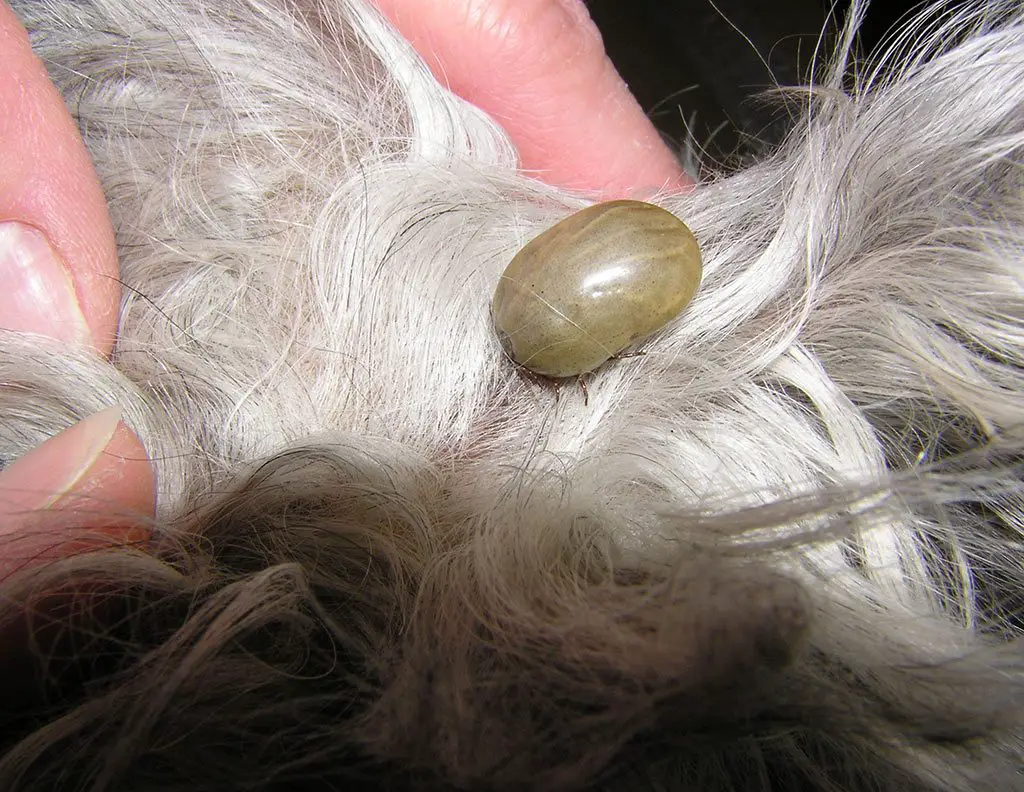Treatments of fleas and ticks in dogs are an important thing for your dog’s life
insects on the body of dogs are definitely something that is not preferred by anyone, especially when you know that these insects responsible for the transmission of many serious diseases of dogs, some of them also transmitted to humans
Table of Contents
The best treatments of fleas and ticks in dogs
The first step in eliminating ticks in dogs is to remove them from the dog’s body the right way as soon as they are detected.

When you discover a tick bug, you must act quickly and accurately to ensure the correct disposal of the tick, as we will explain as follows:
Wear one-off protective gloves before you start removing the tick from your dog’s body. Wear gloves is necessary to protect your hands from any infections or any insects you can not see with your eyes
Use a ticker to remove the tick, or purchase a tick removal device from any pet store
Under no circumstances do not remove the tick in your hand because this will cause serious damage to the dog, nor will it help to remove the tick properly
Install the dog’s body, then start removing the tick by placing the spatula or tool on top of the tick at the nearest point of skin. Then pull it in the direction of my head quickly and without movement to the right and left
Do not vibrate or move left and right while removing the tick. Because this may cause the body to separate from the head, and the survival of the tick head inside the body of the dog
Do not try to burn the tick in the dog’s body, and do not put any organic substances into the dog’s body (jazz or gasoline as an example). All of these methods are unsuccessful and will not lead to tick removal.
After removing the tick, place it in a dish with some pre-prepared alcohol. Do not burn the tick, do not throw it anywhere, and do not crush it with your hands. Because this may lead to not to get rid of it and return it back to the body of the dog
You will notice dermatitis and simple scratching in the dog’s body in place of tick removal. Disinfect the wound and an antibiotic ointment can be used at the site of the infection
Treatments of fleas and ticks in dogs
When the ticks are detected in the dogs and removed properly, you need to properly treat the dog ticks to ensure that the insect does not return to your dog’s body again.
General rule: If you find one tick insect in the dog’s body, there is the possibility of the presence of cocoons or eggs or larvae of the insect in a place both the dog’s body or the dog’s living place
- After removing ticks from your dog, you must take the following steps to ensure proper treatment of dog ticks:
You must cleanse the dog with a disinfectant and kill the tick. Such as biotics,
- The dog is kept in a place other than its place of residence, so as to ensure that no insects are moved from the place of living or to the place of living
- 1 centimeter of apple cider vinegar is placed into 1 liter of water and the dog is warmed. In other words, if the dog is stuffed with 5 liters of water, you should only put 5 centimeters of apple cider vinegar
- Watch out for poisonous bites. Therefore, a muzzle should be placed on the dog’s mouth during the fever so as not to lick its body at all.
- Avoid water reaching the eyes or ear. Protective gloves should be worn, preferably muzzle and glasses so that no water enters your eyes or mouth
- Leave the dog to dry completely in the sun after the bath. Then rinse the dog’s body with a shampoo (Nizoral) as an example
- Rinse the dog thoroughly after rinsing the body well
- Put Ampol Pars or Revolution on the dog’s back, consult a veterinarian on how to put ampoule and the appropriate dose for the size and age of the dog
- It is possible that the dog is given a syringe under the skin. But injections are not given to pregnant dogs or puppies. In general, injections are preferred only in severe cases
- The dog’s place of residence must be washed with the same substance but with a different dose (Biotics a centimeter for every 10 liters of water) to ensure that no larvae or eggs are growing and the litter is transferred back to the dog’s body
- Repeat the process of fever and the process of cleaning the body of the dog every 4 to 6 months as needed

Avoid flea and tick on a dog:
- Prevention of ticks in dogs should be done on more than one axis. You should first pay attention to periodic vaccinations. And be careful not to mix the dog with any strange dogs or any dogs infected with ticks.
- If you are raising a dog in a garden, be careful to cut long grass. The tick can not jump, so it moves the dog’s body through the long weeds as soon as the pup passes. Taking care to cut your lawn regularly reduces your chances of getting ticks
- When walking a dog, avoid the unclean gardens, which are popular for dogs, because they are more likely to be breeding grounds for ticks. You should always check your dog periodically to make sure it is free from ticks.

Best flea and tick medicine for dogs
flea and tick meds for dogs are packaged in small plastic ampoules and placed directly on the skin in the mid-back area above the shoulder.
One of the most effective insect treatments for dogs and cats.
There are many active ingredients that are manufactured in this form the most famous
deltamethrin, dinotefuran, fipronil, imidacloprid, indoxacarb, permethrin, pyriproxyfen, and selamectin
flea and tick pill and flea and tick medicine for dogs.
The most popular brand names for topical insecticides are Frontline, Adams, Sergent, Advantix
There are many other methods of treatment that we do not recommend for the severe toxicity and is prohibited in dogs and cats, such as showers with insecticides or injections of insects, “Ivomac”
You can also learn how to bathe a dog to get rid of fleas

